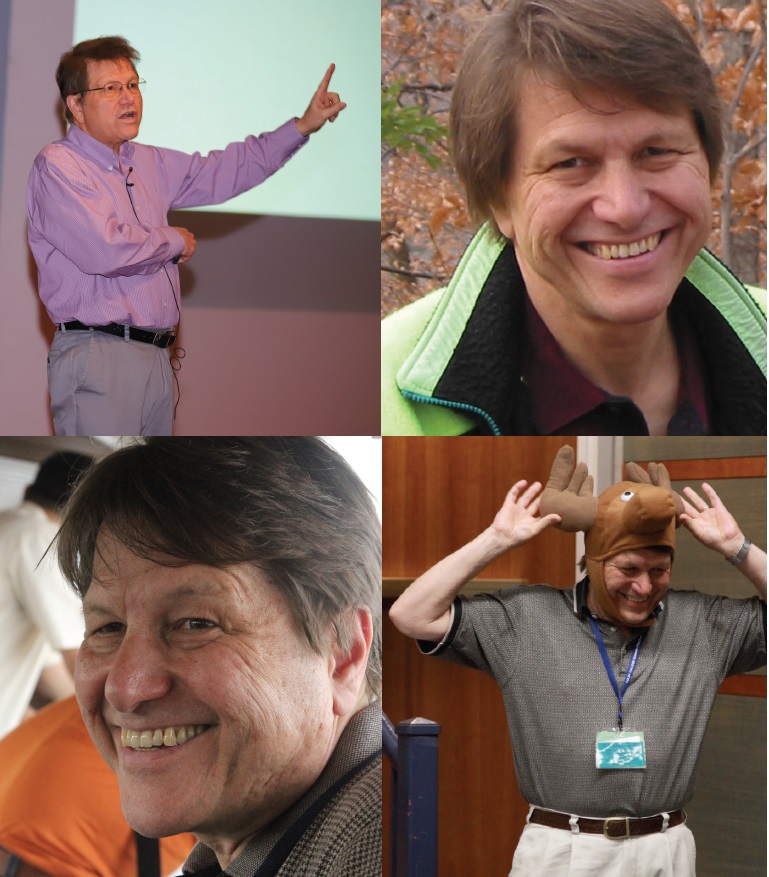Remembering Mark Robbins
Drs. Wilfred T. Tysoe & Nicholas D. Spencer | TLT Cutting Edge October 2020
We remember the life and accomplishments of a true leader in the area of molecular-scale theory of tribology.

Mark Robbins (1956-2020).
We are still recovering from the death of Mark Robbins on Aug. 13, 2020. Mark was a pioneer in the molecular-scale analysis of complex systems and a giant in the field of tribophysics.
Mark was educated at Harvard University and the University of California-Berkeley. He also was a Churchill Fellow at Cambridge University. After a stint as a postdoctoral fellow at Exxon’s Corporate Research Science Laboratory in New Jersey, he joined the department of physics and astronomy at Johns Hopkins University in 1986, where he spent his entire career.
First impressions upon meeting Mark were his beaming smile and his deep insights into and his love of physics. His smile reflected a truly warm and welcoming personality that he used, with particular effectiveness, when conveying his pleasure at describing a new idea. His friendliness and approachability extended to his teaching, where many of his students on the Rate my Professors website thought he was “awesome”—a true accolade.
He described his own research as focusing on non-equilibrium processes such as friction, adhesion, spreading, fluid invasion, the mechanics of disordered materials and shear-induced phase transitions. His goal was to try to understand the atomic origins of macroscopic phenomena using the realization that simple interactions between particles lead to complex behavior when many particles are combined together. His studies of contact and friction looked at topics such as “why you can’t climb walls like Spiderman” and “how molecules interlock at nanometer scales to give rise to macroscopic friction.”
His studies of polymers explained why adhesives are thousands of times harder to break than thermodynamic estimates and why entropic forces appear to describe polymer mechanics at zero temperature. He also dealt with practical topics such as how polymers weld in manufacturing and 3D printing and why virus capsids seem to deform like springs. He asked questions as to what leads to power-law distributions of avalanches in magnetic domain-wall motion and along earthquake faults and how continuum mechanics breaks down at atomic scales.
Some of his most notable contributions to the field of tribology were providing a microscopic justification for Amontons’ laws of friction, describing the freezing of a lubrication layer between surfaces when its thickness decreases beyond five to six molecular diameters and explaining the fundamental importance of nanoscale surface roughness for friction and adhesion. Mark resolved the “adhesion paradox,” which refers to the notion that a simple estimate of the strength of adhesion based on van der Waals forces would predict that essentially all surfaces are sticky.
As one of his close colleagues said of Mark: “He’d be one of very, very few people at an APS meeting who could instantly come up with a correct scaling argument. Out of those, he’d certainly be the only one who’d also know where to get cool gadgets at the booths. And be equally excited about both.”
Mark’s life did not only revolve around physics. In the late 1980s, after a trip to Brazil, he returned with a passion for collecting orchids. He admitted that “When it hit 200, I knew it was an addictive habit.” In typical Mark fashion, this developed into the creation of new orchids, which he named after his children. He also garnered one of his least-well-known awards (at least in the tribology community)—an Award of Merit from the American Orchid Society. Mark also was an accomplished disco dancer. Invited to many tribology conferences as a plenary speaker, Mark would astonish students and other attendees with his dancing prowess, which he developed during the disco craze of the 1970s!
Mark was a good colleague to all of us, a dear friend to many of us and a trusted mentor to a fortunate few. His smile, his ideas, his incisive comments, his good company and his invaluable insights will be sorely missed.
Eddy Tysoe is a distinguished professor of physical chemistry at the University of Wisconsin-Milwaukee. You can reach him at wtt@uwm.edu.
Nic Spencer is professor of surface science and technology at the ETH Zurich, Switzerland, and editor-in-chief of STLE-affiliated Tribology Letters journal. You can reach him at nspencer@ethz.ch.